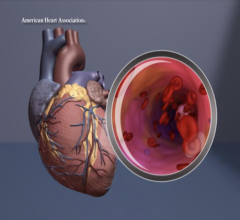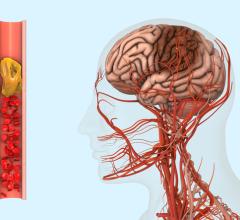
November 25, 2017 — Treatment for gum disease, or periodontitis, significantly lowered blood pressure among Chinese patients at risk for developing high blood pressure, according to preliminary research presented at the 2017 American Heart Association (AHA) Scientific Sessions.
This small study compared blood pressure levels after standard and intensive treatment for gum disease. The standard treatment included basic oral hygiene instructions and teeth cleaning with plaque removal above the gum line. The intensive treatment included the standard treatment along with cleaning down to the roots with local anesthesia, antibiotic treatment and dental extractions, if necessary.
Researchers found:
• One month after treatment, systolic blood pressure was nearly three points lower in participants receiving intensive treatment, but no significant difference was observed in diastolic blood pressure.
• Three months after treatment, systolic blood pressure was nearly 8 points lower and diastolic pressure was nearly 4 points lower in patients receiving intensive treatment.
• Six months after treatment, systolic blood pressure was nearly 13 points and diastolic blood pressure was almost 10 points lower in patients receiving intensive treatment.
“The present study demonstrates for the first time that intensive periodontal intervention alone can reduce blood pressure levels, inhibit inflammation and improve endothelial function,” said study lead author Jun Tao, M.D., Ph.D., chief of the department of hypertension and vascular disease and director of the Institute of Geriatrics Research at The First Affiliated Hospital of Sun Yat-sen University in Guangzhou, China.
Study participants included 107 Chinese women and men age 18 years and over with prehypertension and moderate to severe gum disease. Through random assignment, half of the participants received standard treatment and half received intensive treatment for gum disease.
Researchers noted additional research with patients from diverse backgrounds is needed.
In the United States, high blood pressure affects 29.1 percent of adults aged 18 and over in 2011 – 2012. High blood pressure is a major risk factor for heart and blood vessel disease. Fortunately, most people can manage the disease through diet and lifestyle changes, such as quitting smoking, maintaining a healthy weight, being physically active, limiting alcohol and taking prescribed medications properly.
Co-authors are Jun-Ying Yang, M.D.; Qian-Bing Zhou, M.D.; Wen-Hao Xia, M.D., Ph.D.; Jing Ren, M.D.; Chen Su, M.D., Ph.D., and Xiao-Yu Zhang, M.D., Ph.D. Author disclosures are on the abstract.
The National Science and Technology Pillar Program funded the study.
Links to other AHA 2017 Late-breaking Trials
For more information: heart.org


 July 24, 2024
July 24, 2024 








